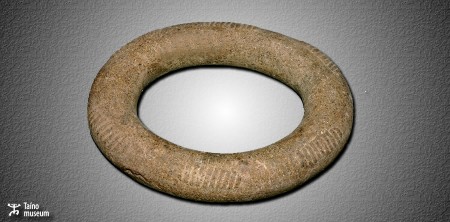Stone collars are large stone rings. They date approximately from 600 AD to 1500 AD they are artifacts used at public ceremonies and would have to be visible to many people at the same time. They were produced to communicate and reinforce religious or social messages.
Read more
Stone collar










